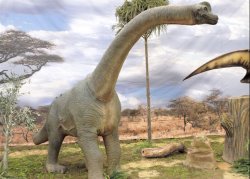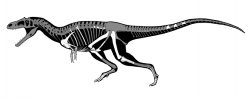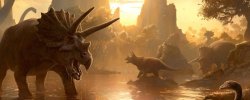Big Grassy Dinosaur With A Long Neck
 A member of the burrow sub unit in the artist's performance.
A member of the burrow sub unit in the artist's performance.
Hombre D. Hojalata
Russian scientists from the Tomsk and St. Petersburg Universities and the RAN Zoological Institute have studied the previously detected denosaurus omenities and have concluded that this is a new type belonging to the Titanosaurid family, the Zaurope subdivision. The paleontologists now describe a new species (the Latin name has not yet been assigned to it) and combine skeleton fragments together. The openings are posted on the website of the University of Tom. The Siberian Times♪
Scientists found the swelling remains of the lizard as early as 2008 on the shore of the Kiya River in the Kemero region. However, the bones were " sealed " in the monolithic glides of the sandbox, so the scientists needed several years to retrieve the ocamenality without harming them.
The researchers took the dinosaur to the sub-units of the burpod, a group of four-legged grass lizards. Representatives of this species were in the territory of modern Western Siberia in the early meal period, about 100 million years ago. The length was about 20 metres and the weight was 50 tons (approximately 7 African adult elephants). The dinosaurs had a long neck with a little head and a long tail that balancing it, and short, fat feet with five fingers.
The new species differs from those already known as the skeleton: its cross ribs were in the form of a star and approached the centre, and there was also no collation of the vertebral arc (upstream of the vertebrae). " On one of the hypotheses, titanosaurids could be on their back legs using their tail to reach the upper branches of trees. To that end, they needed a more mobile rear of the vertebral vertebral " , explaining Professor Averjanov of the RAN Zoological Institute.
Zauropes are giant grassy dinosaurs with a massive body, a long neck and a little head. The representatives of the Zauropes lived on virtually all continents except the Antarctica, 200-85 million years ago. One of the group ' s most famous representatives was the dictators, the lizards living in modern North America during the juridical period. The average length was 25 metres and the weight was 10 to 16 tons. They're the biggest dinosaurs known for full skeletons.









